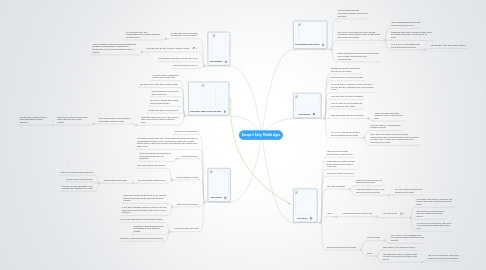
1. Charlemagne
1.1. He was the king of the franks and emperor of the Romans.
1.1.1. On Christmas day, 800, Charlemagne was crowned emperor of the Romans.
1.2. After he died, he left Southern Europe united.
1.2.1. After his death, all the Charles established and worked for was thrown to waste as his decendants couldn't cope with their fear of Vikings,
1.3. Encouraged education among The Franks.
1.4. Came to power is 768 C.E.
2. The Anglo-Saxons and The Celts
2.1. Invaded Britain, pushing the native Celtic people out.
2.2. Like the Franks, they were farmers aswell.
2.3. Men and women shared hard work in the farm.
2.4. The Anglo-Saxons were aswell skilled metal workers.
2.5. Created the epic novel, Beowulf.
2.6. Alfred the Great was one of two leaders who could actually defeat Vikings in raids.
2.6.1. After Alfred died, he left southern and western Europe united.
2.6.1.1. England as a whole would suffer from bad kings and Viking raiders.
2.6.1.1.1. William the Conqeuror was a king who helped rebuild England.
3. The Vikings
3.1. Came from Scandanavia.
3.2. On Easter Sunday, 855: The Vikings attacked at the very heart of Charlemagne's empire, Paris. Vikings were stationed in other places aswell, a big mass invasion was planned. The Vikings won these raids.
3.3. Viking Reputation
3.3.1. Where thought to be sent by god to punish the world for it's behaviour.
3.4. Life among the Vikings
3.4.1. They were farmers and fishers.
3.4.2. Men and women shared work.
3.4.2.1. Women had many rights.
3.4.2.1.1. They could divorce their husbands.
3.4.2.1.2. Women could own property.
3.4.2.1.3. Women also had the right to sue someone and take them to court.
3.5. Laws and Government
3.5.1. Their laws weren't written down, Law Speaker would memorize the law and recite it when needed.
3.5.2. If you were outlawed, anyone could kill you and they reward was the right to own some of your property.
3.6. The end of the Viking age
3.6.1. The Viking age ended in the eleventh century.
3.6.2. European leaders grew stronger and learned to deal with the Vikings.
3.6.3. Gradually, Viking settlements were destroyed.
4. The Mediterranean World
4.1. The Mediterranean has everything needed for people to live there.
4.2. One of the most important early Europe civilizations who settled in the Mediterranean world were the Greeks.
4.2.1. They studied philosophy which was the pursuit of ideas.
4.2.2. Alexander the Great conquered many lands and spread the Greek culture as far as India.
4.2.3. At 150 B.C.E., The Greeks were conquered by the Romans.
4.2.3.1. The Romans took the Greek's studies.
4.3. Rome aswell was one of the most important early Europe civilizations in the Mediterranean.
5. The Romans
5.1. Established governing systems that we still use today.
5.2. After Rome fell, it went into chaos.
5.3. For more than 6 centuries, Rome controlled most of Europe, southeast Asia, and northern Africa.
5.4. Latin was their common language.
5.5. Most of their art and architecture was copied by the Greeks.
5.6. They developed laws for all people.
5.6.1. Some Canadian laws were based on some of the Roman's laws.
5.7. In 410 C.E., The Roman Empire was conquered by the Goths
5.7.1. Only the capital, Constantinople remained strong.
5.7.2. After about 420 years of chaos in Rome, Charlemagne was crowned emperor of the Romans by Pope Leo III, slowly the civilization became organized once again.
6. The Franks
6.1. They had a law system, developed by Charlemagne.
6.2. Most free men walked around with a throwing axe called a "francisca."
6.3. The word "Frank" meant free.
6.4. The Meroviningians
6.4.1. Ruled the Franks for almost three hundred years.
6.4.2. After the death of Clovis I, the family became corrupted.
6.4.2.1. For two centuries, the family remained corrupted.
6.5. Laws
6.5.1. They had their own code of law.
6.5.1.1. The Salic Code
6.5.1.1.1. If property was stolen or a person was killed, a fine called "wergild" would be fined.
6.5.1.1.2. Placed money value on every piece of property and every person.
6.5.1.1.3. If someone was murdered, the family could refuse the wergild and kill the man.
6.6. Everyday life among the Franks
6.6.1. Social classes
6.6.1.1. Only 40% or less of people were rich, the rest were poor (60% of the people)
6.6.2. Serfs
6.6.2.1. They weren't considered as slaves.
6.6.2.2. Serfs tended to farms, however they couldn't move away from their lord's estate.
6.6.2.2.1. The lord of the manor could steal crops from the serf if he wanted.
